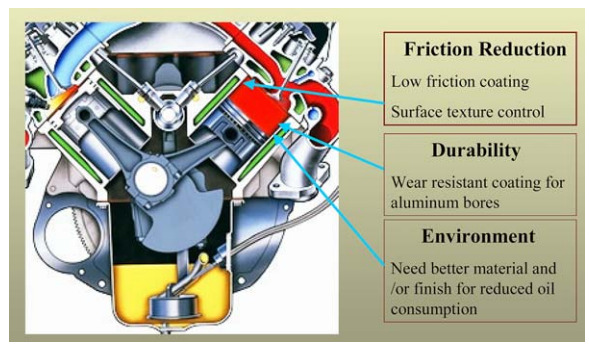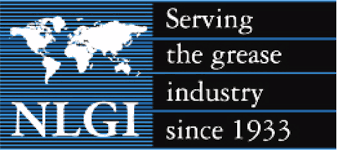I am currently working as a Postgraduate Researcher at the University of Leeds, where I am actively involved in research activities. Prior to this, I successfully completed my master's degree through the renowned Erasmus Mundus joint program, specializing in Tribology and Bachelor's degree in Mechanical Engineering from VTU in Belgaum, India. Further I handle the social media pages for Tribonet and I have my youtube channel Tribo Geek.
Engine Tribology
Table of Contents
Introduction
The engine tribology plays a crucial role in achieving effective lubrication for all moving engine parts, aiming to minimize friction and wear while minimizing environmental impact. This is challenging due to the diverse operating conditions of engine speed, load, and temperature. Enhancements in engine tribology can result in various advantages, including reduced fuel consumption, increased engine power output, decreased oil usage, lower harmful exhaust emissions, improved durability, reliability, and overall engine lifespan. With a significant number of internal combustion engines in use, even minor improvements in efficiency, emissions, and durability can profoundly impact global fuel economy and the environment in the long run.
Lubrication regime in engine
In the tribology perspective of a powertrain system operating with liquid lubricant, the crucial tribological parameter is the lubricant film thickness that separates interacting component surfaces. This is determined by the film thickness ratio (parameter k), representing the lubricant film’s relative magnitude compared to the combined surface roughness of the interacting surfaces. Fig. 3 illustrates the correlation between the coefficient of friction and the oil film thickness ratio or Summerfield number (viscosity * speed/load). The top diagrams depict visual examples of surface lubrication, ranging from surface contact to fluid film separation and intermittent contact. The curved line below represents the relationship between the friction coefficient and the Summerfield number.
Different automotive components rely on various lubrication modes for optimal performance, experiencing different lubrication regimes during a single cycle. Journal and thrust bearings typically operate in the hydrodynamic lubrication regime, where surfaces are separated by a lubricant film. On the other hand, valve train, piston ring assembly, and transmission clutch sliding often occur under mixed or boundary lubrication conditions, where surface contact and chemical films play a role in surface protection. The significance of different lubrication regimes for each engine component may change with interface surface roughness, wear of critical surfaces, and lubricant degradation.

Figure-1 Lubrication regimes for engine components and their relationships to friction.
Piston bearings
In functioning engines, the supporting journal bearings for the camshaft, crankshaft, and connecting rod are composed of split half-shells with a steel backing strip and a softer overlay like tin-aluminum or lead-bronze. Shafts are typically crafted from heat-treated steels or spheroidal graphite irons. Lubricant is directed through jet impingement or a hollow shaft bore to minimize wear, provided it is adequately supplied. However, excessive wear can occur due to shaft misalignment, particulate contamination, and bearing corrosion. The complex tribology of journal bearings involves factors such as lubricant supply, thermal effects, dynamic loading, and the elasticity of bounding solids. The widely-used mobility technique, established approximately 30 years ago, offers a robust and straightforward computer analysis, calculating cyclic minimum film thickness between the journal and bearing. While it relies on simplifying assumptions and is primarily applicable to hydrodynamic lubrication, recent forecasts for passenger car engine bearings suggest values in the range of 0.5–1.0 μm, indicating the possibility of asperity interaction during certain phases of the engine cycle. Designing engine bearings to operate in the mixed lubrication regime is considered pivotal for enhancing overall engine performance.

Figure-2 Research opportunities for improving friction and wear reduction in an engine design.
Piston assembly
The piston assembly serves as a critical tribological element in reciprocating internal combustion engines, playing a pivotal role in transforming combustion energy into useful kinetic energy. Central to this is the ring pack, a set of metallic rings with a primary function of maintaining an effective gas seal between the combustion chamber and crankcase. These rings, forming a labyrinth seal, closely adhere to their grooves in the piston and cylinder wall, contributing to effective sealing through tribological interactions. Beyond sealing, the piston ring also engages in heat transfer from the piston to the cylinder wall and coolant, managing oil transport from the crankcase to the combustion chamber. This oil flow, a substantial contributor to engine oil consumption, impacts the tribology of the system and results in increased harmful exhaust emissions as the oil mixes and reacts within the combustion chamber. In the pursuit of meeting stringent legislative requirements, the focus on reducing permissible oil consumption, compared to predecessors two decades ago, aligns with tribological objectives to extend engine service intervals and minimize adverse environmental impacts.
Valve train
In a modern valve train system comprising valves, valve springs, retainers, keys, rocker arms, piston rods, lifter/tappets, and a camshaft, the central role involves converting rotary camshaft motion into linear valve motion for precise control of fluid flow into and out of the combustion chamber. A secondary function is the mechanical driving of auxiliary components such as distributors, fuel pumps, water pumps, and power steering pumps. Different valve train mechanisms, including poppet, sleeve, and rotary valves, have been employed in engines. Poppet valve configurations, predominantly used by major automobile manufacturers, are actuated by a cam synchronized with the combustion cycle. The mechanisms, classified as Type 1 through Type 5, encompass direct acting bucket valve trains, end pivot valve trains, center pivot systems, center pivot with cam follower, and overhead (OHV) pushrod setups. These mechanisms may employ either roller or sliding friction at contact interfaces. Various designs, such as push-rod operated, center-pivoted rocker, finger follower, direct acting bucket follower, and roller follower, are utilized to transmit cam motion to the valve. Alternative designs like rotary or sleeve valves, however, present challenges related to lubrication, causing excessive oil consumption, suboptimal sealing properties, and increased friction concerns within the system.
Reference






